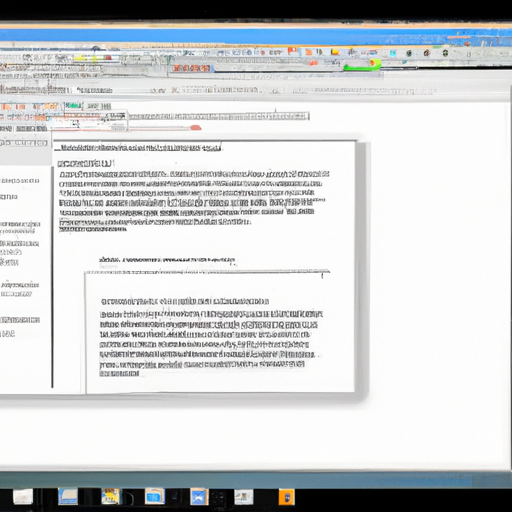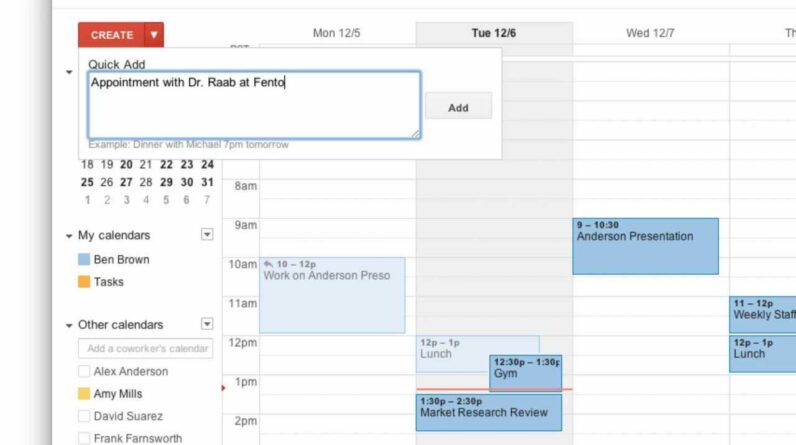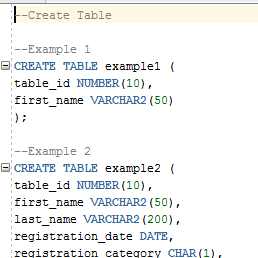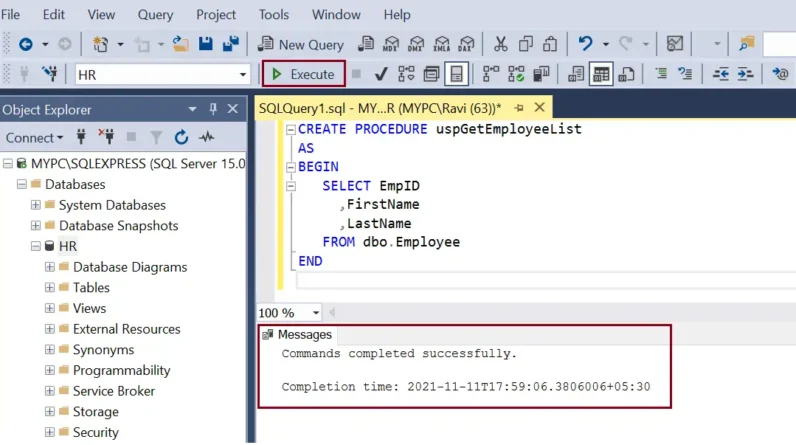
If you’re looking to master the art of creating tutorials, look no further. This article is your go-to guide, offering expert advice on how to harness the power of Google Docs to create informative and engaging tutorials. With its user-friendly interface and array of powerful features, Google Docs is the perfect platform for bringing your tutorials to life. Whether you’re a seasoned educator, a content creator, or simply someone who loves sharing knowledge, this article will equip you with all the tips and tricks you need to create captivating tutorials that will leave your audience educated and inspired.
In the digital age, tutorials have become an invaluable tool for teaching and learning. From cooking recipes to makeup techniques to DIY projects, tutorials provide step-by-step guidance and empower individuals to acquire new skills from the comfort of their own homes. With Google Docs, you have the power to create visually appealing and easy-to-follow tutorials that will captivate your audience from start to finish. In this article, we will explore the various features and functionalities of Google Docs that will take your tutorials to the next level. Get ready to unlock your tutorial-creating potential and become a master at sharing knowledge with the world.

Table of Contents
Benefits of Creating Tutorials with Google Docs
Enhanced Collaboration
Creating tutorials with Google Docs offers the advantage of enhanced collaboration. With Google Docs, multiple users can simultaneously work on the same document, making it easier and more efficient to collaborate with others. This real-time collaboration allows for seamless teamwork, as you can see edits and additions made by others in real-time. Whether you’re working on a tutorial with a colleague or seeking input and feedback from others, Google Docs makes the process smoother and more collaborative.
Easy Accessibility
Another benefit of using Google Docs for tutorial creation is the easy accessibility it provides. Since Google Docs is a cloud-based platform, you can access your tutorials from any device with an internet connection. This means you can work on your tutorials from your computer, smartphone, or tablet, providing you with flexibility and convenience. Additionally, Google Docs automatically saves your work as you go, eliminating the risk of losing your progress.
Version History
Google Docs also offers a version history feature that allows you to track revisions and revert to previous versions if needed. This is particularly useful when creating tutorials, as you can easily go back and make changes or updates to the content without losing any previous work. The version history feature enables you to track the evolution of your tutorial and ensure that it always reflects the most up-to-date information.
Simplified Formatting
Formatting can often be a challenge when creating tutorials, but Google Docs makes it easy with its simplified formatting tools. You can easily add headers and subheaders to organize your content, making it more readable and user-friendly. Additionally, Google Docs offers various formatting options for text, such as bold, italics, and underline, allowing you to emphasize important points within your tutorial. The simplified formatting capabilities of Google Docs make it easy to create professional-looking and aesthetically pleasing tutorials.
Creating a Google Document Tutorial
Step 1: Define the Tutorial Topic
The first step in creating a Google Document tutorial is to define the topic of your tutorial. Determine what specific task or concept you want to educate your audience about. It’s important to choose a topic that is valuable and relevant to your intended audience. Consider their needs and interests when selecting a tutorial topic.
Step 2: Outline the Tutorial
Before diving into the creation process, it’s helpful to outline your tutorial. This involves breaking down the tutorial into logical sections or steps. Outlining helps you organize your thoughts and ensures that you cover all the necessary information in a clear and structured manner. It also serves as a roadmap for the rest of the tutorial creation process.
Step 3: Set up the Google Document
Once you have your tutorial topic and outline ready, it’s time to set up your Google Document. Open Google Docs and create a new document. Give your document a descriptive title that accurately reflects the tutorial topic. This will make it easier for you and others to locate the document later.
Step 4: Organize Content with Headers and Subheaders
To make your tutorial easy to follow and navigate, use headers and subheaders to organize your content. Headers are larger and more prominent, while subheaders provide further categorization within each section. This hierarchical structure helps readers quickly locate the information they need and allows for a better flow of content.
Step 5: Add Screenshots or Images
Visual aids can significantly enhance the effectiveness of your tutorial. Take screenshots or use relevant images to illustrate the steps or concepts you are explaining. To add an image to your Google Document, click on the “Insert” tab, select “Image,” and choose the image file you want to include. Position the image appropriately within the document and provide clear captions or explanations as necessary.
Step 6: Embed Videos or Presentations
If your tutorial would benefit from videos or presentations, you can easily embed them in your Google Document. This allows your audience to watch or interact with additional multimedia content without needing to navigate away from the tutorial. To embed a video or presentation, click on the “Insert” tab, select “Video” or “Presentation,” and follow the prompts to add the desired content. Adjust the placement and size of the embedded content to fit seamlessly within your tutorial.
Step 7: Include Text Formatting and Styling
Make your tutorial visually appealing and easy to read by utilizing text formatting and styling options. Emphasize important words or phrases by applying text formatting, such as bold or italics. Consistency in font size, color, and style also contributes to a professional and coherent tutorial. Ensure that your chosen text formatting aligns with the overall tone and branding of your tutorial.
Step 8: Consider Adding Hyperlinks
Adding hyperlinks to external resources or related information can greatly enhance the value of your tutorial. These hyperlinks allow readers to easily access additional information or related tutorials, expanding their knowledge beyond what you have provided in the document. When adding hyperlinks, use descriptive anchor text that accurately reflects the content of the linked resource.
Step 9: Utilize Google Docs’ Collaboration Features
Take full advantage of Google Docs’ collaboration features to involve others in the tutorial creation process. invite relevant individuals, such as subject matter experts or colleagues, to collaborate on the document. Assign tasks and roles to different collaborators to ensure efficient progress. Use the commenting and suggestion features to gather feedback and incorporate improvements. Collaboration enhances the overall quality and accuracy of your tutorial.
Step 10: Proofread and Edit the Tutorial
Before sharing or publishing your tutorial, it’s crucial to proofread and edit it thoroughly. Check for grammatical errors, spelling mistakes, and inconsistencies. Ensure that the content flows logically and is easy to understand. Consider engaging a fresh pair of eyes to review your tutorial for an objective perspective. Taking the time to proofread and edit will result in a polished and professional tutorial.
Best Practices for Creating Effective Tutorials
Ensure Clarity and Conciseness
One of the key aspects of creating effective tutorials is to ensure clarity and conciseness in your content. Use clear and straightforward language, avoiding unnecessary jargon or complexity. Break down complex steps or concepts into smaller, digestible pieces to aid understanding. Keep your sentences and paragraphs concise, focusing on delivering the necessary information in a precise manner.
Use Visual Aids for Better Understanding
Visual aids such as screenshots, images, diagrams, or videos complement textual instructions and improve understanding. Incorporating visual elements helps to demonstrate concepts or illustrate steps visually, making it easier for your audience to follow along. Visual aids can bridge language barriers and provide a more engaging learning experience.
Provide Real-World Examples
To make your tutorial more relatable and practical, provide real-world examples or scenarios. Relate the tutorial content to everyday situations or common challenges that your audience may encounter. Real-world examples help your audience connect with the material and understand how to apply it in their own lives or work.
Test and Verify Steps
Before finalizing your tutorial, it’s crucial to test and verify each step to ensure accuracy and completeness. Walk through the tutorial yourself, following each instruction and confirming that the desired outcome is achieved. This process helps identify any gaps or mistakes in the tutorial, allowing you to make necessary adjustments before sharing it with others.
Add a Table of Contents
Including a table of contents at the beginning of your tutorial improves navigation and accessibility. A table of contents provides an overview of the tutorial’s sections and helps readers quickly find the specific information they need. Ensure that your table of contents is accurately linked to the corresponding sections within the tutorial.
Include Troubleshooting Tips
Anticipate potential challenges or issues that your audience may encounter while following your tutorial. Include troubleshooting tips or common solutions to address these problems. Troubleshooting tips demonstrate your expertise and provide valuable assistance to your audience, ensuring they can successfully complete the tutorial even if they encounter obstacles.
Make it Interactive
Engage your audience by incorporating interactive elements within your tutorial. This could include quizzes, exercises, or interactive widgets that allow readers to interact with the content. Interactivity improves knowledge retention and creates a more dynamic learning experience.
Collect Feedback and Improve
Once your tutorial is complete and shared, encourage your audience to provide feedback. Gather insights on the clarity, effectiveness, and helpfulness of your tutorial. Use this feedback to improve future tutorials and to continuously enhance the quality of your content.
Sharing and Publishing Your Tutorial
Sharing Settings
When sharing your tutorial, you can control the access and permissions of others. Google Docs provides various sharing settings, such as allowing others to view, comment, or edit the document. Choose the appropriate sharing settings based on your desired level of collaboration and the privacy considerations for your tutorial.
Collaborative Editing
Collaborative editing is a powerful feature of Google Docs that allows multiple users to work on the same document simultaneously. With collaborative editing enabled, all changes made by collaborators are automatically synced and visible to everyone working on the document. This facilitates real-time collaboration and eliminates the need for version control.
Publishing as a Web Page
If you wish to share your tutorial as a web page, you can easily do so using Google Docs’ publishing feature. Simply click on the “File” tab, select “Publish to the web,” and choose the option to publish the document as a web page. This enables you to share your tutorial with a broader audience and allows readers to access it without needing a Google account.
Exporting to Different Formats
Google Docs allows you to export your tutorial in various formats, including PDF, Word, and plain text. Exporting to different formats enables you to cater to different audience preferences and makes it easier to distribute your tutorial through different channels. Choose the appropriate format based on your intended audience and distribution method.

Advanced Features for Tutorial Creation
Comments and Suggestions
Utilize the comments and suggestions feature in Google Docs to gather input and feedback from your collaborators or readers. Comments allow others to provide specific feedback on a particular section or element of the tutorial, while suggestions enable others to propose edits or improvements. By leveraging these features, you can engage your audience and enhance the accuracy and clarity of your tutorial.
Using Google Forms for Quizzes
To test your audience’s understanding of the tutorial content, consider using Google Forms to create interactive quizzes. Google Forms allows you to create multiple-choice or open-ended questions that readers can complete within the tutorial. This helps reinforce learning and provides an opportunity for readers to self-assess their comprehension.
Adding Extensions and Add-ons
Extend the functionality of Google Docs by exploring and using various extensions and add-ons. These tools, created by the Google Docs community and third-party developers, contribute additional features and capabilities to enhance your tutorial creation process. Popular extensions and add-ons include citation managers, grammar checkers, and content templates.
Integrating with Google Classroom
If you are an educator or creating tutorials for educational purposes, integrating Google Docs with Google Classroom can simplify the distribution and management of your tutorials. Google Classroom allows you to create assignments, track student progress, and provide feedback within a centralized platform. This integration streamlines the learning experience for both instructors and students.
Creating Interactive Presentations
Google Docs also offers the option to create interactive presentations, which can be beneficial for tutorial delivery. Interactive presentations allow you to include sections with audience participation, such as polling, quizzes, or collaborative whiteboarding. These interactive elements enhance engagement and ensure active participation from your audience.
Tips for Ensuring Accessibility and Usability
Designing for Different Devices
To ensure accessibility and usability, design your tutorial to be compatible with different devices. Consider the various screen sizes and resolutions that readers may use to access your tutorial. Optimize the layout and formatting to ensure readability and functionality across devices, including desktop computers, laptops, tablets, and smartphones.
Optimizing for Assistive Technologies
Make your tutorial accessible to individuals with visual or hearing impairments by optimizing it for assistive technologies. Ensure that your tutorial is compatible with screen readers and other assistive tools. Use proper headings, alternative text for images, and descriptive link text to provide a seamless user experience for individuals using assistive technologies.
Creating Alt Text for Images
For visually impaired individuals, alt text (alternative text) is vital for understanding images within your tutorial. Alt text describes the content or purpose of an image and is read aloud by screen readers. When adding images to your tutorial, provide descriptive alt text for each image to ensure that visually impaired users can understand the context.
Using Descriptive Link Text
When adding hyperlinks to external resources or related information, use descriptive link text instead of generic phrases like “click here” or “read more.” Descriptive link text provides users with context and conveys where the link will take them. This improves accessibility by enabling individuals using screen readers or other assistive technologies to understand the purpose of the hyperlink.
Maintaining Accessibility Standards
Adhering to accessibility standards, such as the Web Content Accessibility Guidelines (WCAG), ensures that your tutorial is accessible to individuals with disabilities. Consider elements such as color contrast, keyboard accessibility, and text readability when creating your tutorial. Following these standards not only ensures inclusivity but also improves the overall usability of your tutorial for all users.

Backup and Recovery Options
Enabling Auto-Save and Revision History
To safeguard your tutorial against unforeseen circumstances or accidental changes, enable the auto-save feature in Google Docs. This automatically saves your progress at regular intervals, ensuring that no work is lost. Additionally, utilize the revision history feature to track changes and revert to previous versions if needed.
Restoring Previous Versions
In the event that you need to revert to a previous version of your tutorial, Google Docs allows you to restore previous versions. Access the revision history of your document and select the desired version to revert to. This feature is particularly beneficial if you made unintended changes or need to undo edits made by collaborators.
Backing up to Google Drive
For added security and peace of mind, consider backing up your tutorial to Google Drive. Google Drive provides cloud storage for your files, making them easily retrievable and accessible from anywhere with an internet connection. By storing your tutorial in Google Drive, you minimize the risk of data loss due to hardware failures or other unexpected events.
Exporting to Other Cloud Storage Platforms
If you prefer to store your tutorial in a different cloud storage platform, Google Docs allows you to export your document to various file formats that can be uploaded to other platforms. This gives you the flexibility to choose the cloud storage solution that best suits your needs and preferences.
Collaborating with Others on Tutorial Creation
Inviting Collaborators
Collaboration is a major strength of Google Docs, and inviting collaborators to work on your tutorial is simple. Share the document with the individuals you want to collaborate with by clicking on the “Share” button in the top right corner of the document. Enter their email addresses or select them from your contacts, then choose the level of access they should have.
Assigning Tasks and Roles
Assigning tasks and roles to your collaborators ensures efficient collaboration and division of responsibilities. Clearly define the areas each collaborator is responsible for and establish a timeline for completion. This helps prevent redundancy, maintains accountability, and streamlines the tutorial creation process.
Tracking Changes and Suggestions
Google Docs automatically tracks changes made by each collaborator and allows you to view revisions and suggestions in the document’s version history. This visibility enables you to keep track of the ongoing collaboration and easily incorporate the changes made by your collaborators. Utilize the commenting and suggestion features to communicate and provide feedback on specific aspects of the tutorial.
Utilizing Live Chat and Commenting
Google Docs offers a live chat feature that allows collaborators to communicate in real-time directly within the document. This enables immediate discussion and clarification, eliminating the need for external communication channels. Additionally, the commenting feature allows for asynchronous communication and feedback, providing flexibility for collaborators in different time zones or schedules.

Securing Your Tutorial and Privacy Considerations
Setting Access Permissions
When sharing your tutorial, it’s important to consider the access permissions you grant to collaborators or readers. Google Docs provides various options, such as allowing others to view, comment, or edit the document. Assess the privacy implications of your tutorial content and choose the appropriate access level to maintain control over its dissemination.
Using Two-Factor Authentication
To enhance the security of your Google Docs account, consider enabling two-factor authentication (2FA). 2FA adds an extra layer of protection by requiring a verification code in addition to your password during login. This reduces the risk of unauthorized access to your tutorial documents and helps maintain the confidentiality of your content.
Protecting Sensitive Information
If your tutorial contains sensitive or confidential information, take steps to protect it. Avoid including personally identifiable information, trade secrets, or other proprietary data in your tutorial. If necessary, redact or anonymize sensitive information to maintain privacy and protect sensitive data from unauthorized access.
Considering Copyright and Intellectual Property
Respect copyright and intellectual property laws when creating tutorials with Google Docs. Ensure that you have the necessary permissions or licenses to include copyrighted material, such as images, text, or videos. When incorporating external content, clearly provide attribution and comply with any usage restrictions or guidelines specified by the copyright holder.
Conclusion
In conclusion, creating tutorials with Google Docs offers a wide range of benefits, including enhanced collaboration, easy accessibility, version history, and simplified formatting. By following the step-by-step process outlined in this article, you can create comprehensive and effective tutorials that provide value to your audience.
By incorporating best practices such as clarity and conciseness, visual aids, real-world examples, and interactivity, you can ensure that your tutorials are engaging, informative, and user-friendly. Sharing and publishing your tutorials using Google Docs’ features and functionalities allow you to control access, collaborate effectively, and reach a broader audience.
Consider utilizing advanced features like comments and suggestions, Google Forms for quizzes, extensions and add-ons, integration with Google Classroom, and interactive presentations to elevate the quality and interactivity of your tutorials. Additionally, prioritize accessibility and usability by designing for different devices, optimizing for assistive technologies, and adhering to accessibility standards.
Remember to back up your tutorials regularly, collaborate with others effectively, and consider privacy and security considerations to protect your content and ensure the integrity of your tutorials. By following these guidelines, your tutorials created with Google Docs will empower and educate your audience, fostering effective knowledge sharing and promoting continuous improvement in the field.








